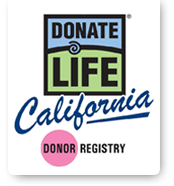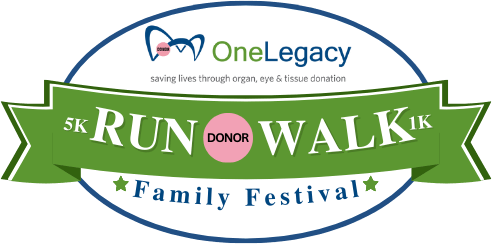Governor Brown Says “YES!” to e-Registration for Organ, Eye & Tissue Donation
Real-time Data Collection Will Save More Lives in California
SAN DIEGO, Calif., October 8, 2014 – Smart phones are the state’s latest tool for saving lives through organ, eye and tissue donation. Governor Jerry Brown has signed into law AB 2399 (J. Pérez), which allows Donate Life California to electronically register individuals to be organ, eye and tissue donors by scanning their driver license or state-issued identification (ID) card into a secure smart phone application.
“e-Registration is fast, simple, accurate and secure. Using current technology to register as an organ, eye and tissue donor makes the process quicker and more efficient at community events,” said Cindy Siljestrom, president of the Donate Life California Board of Directors. “We hope to increase California’s registry numbers to reflect the true generosity of Californians by making registration as easy as possible.”
“I am pleased the Governor has signed AB 2399, to make it easier to verify a person has elected to become an organ donor,” said Assembly Speaker Emeritus John A. Pérez. “With so many thousands of Californians awaiting an organ donation, it’s vital that we take every step to ensure that those Californians who wish to donate their organs have their wishes honored; and this legislation helps ensure that outcome. I also want to thank Donate Life California for their efforts on this bill and for all the work they do to promote organ donation throughout California.”
The majority of people on the Donate Life California Organ, Eye & Tissue Donor Registry sign up through the California Department of Motor Vehicles (DMV). However, only about 32 percent of licensed drivers in California are registered donors, despite a 2012 national survey stating that 94.9 percent of U.S. adults support donation.1 Sadly, California has one of the lowest state donor registration rates in the country, despite having the largest waiting list with more than 22,000 people needing life-saving transplants.
e-Registration will make it easier for people to become registered donors. Individuals can sign up onto the Registry in a matter of seconds while at community events and health fairs throughout the state by scanning their DMV ID card or driver license through a handheld smart phone device.
How E-Registration works:
- Scan the DMV ID card or driver license through an encrypted smart phone device
- ID holder confirms the information and desire to register as a donor
- Upload the information to the Donate Life California Organ, Eye & Tissue Donor Registry
1 National Survey of Organ Donation Attitudes and Behavior sponsored by Health Resources and Services Administration (HRSA)
Fast Facts from Donate Life California:
- 18 people across the country die each day awaiting life-saving organ transplants.
- One in five on the U.S. organ transplant waiting list lives in California.
- All major religions support or permit organ, eye and tissue donation.
- You’re never too old to register as an organ, eye and tissue donor.
- Do not rule yourself out! People with all medical conditions are potential donors.
About Donate Life California:
Donate Life California is the nonprofit, state-authorized organ, eye and tissue donor registry. As a public service, the registry assures all personal information is kept confidential and stored in a secure database, accessible only to authorized organ and tissue recovery personnel at the time of an actual donation opportunity. The registry is administered by Donate Life California and California’s four nonprofit, federally designated organ recovery organizations: Donor Network West (formerly CTDN), Lifesharing, OneLegacy and Sierra Donor Services. For more information about Donate Life California; how organ, eye and tissue donation saves and improves lives; and to sign up, please visit www.donateLIFEcalifornia.org or in Spanish at www.doneVIDAcalifornia.org.
High concentration of Azithromycin in infected tissues is also caused by the fact that phagocytes and macrophages transport it to the site of infection and release in the area of inflammation. Azithromycin is prescribed in case of illness or injury at the time.









